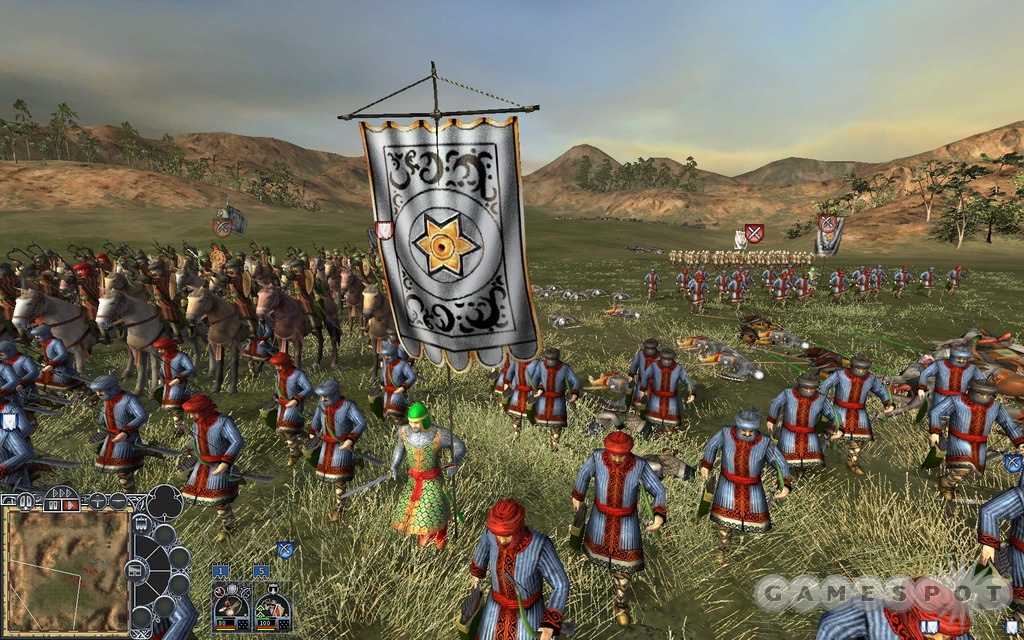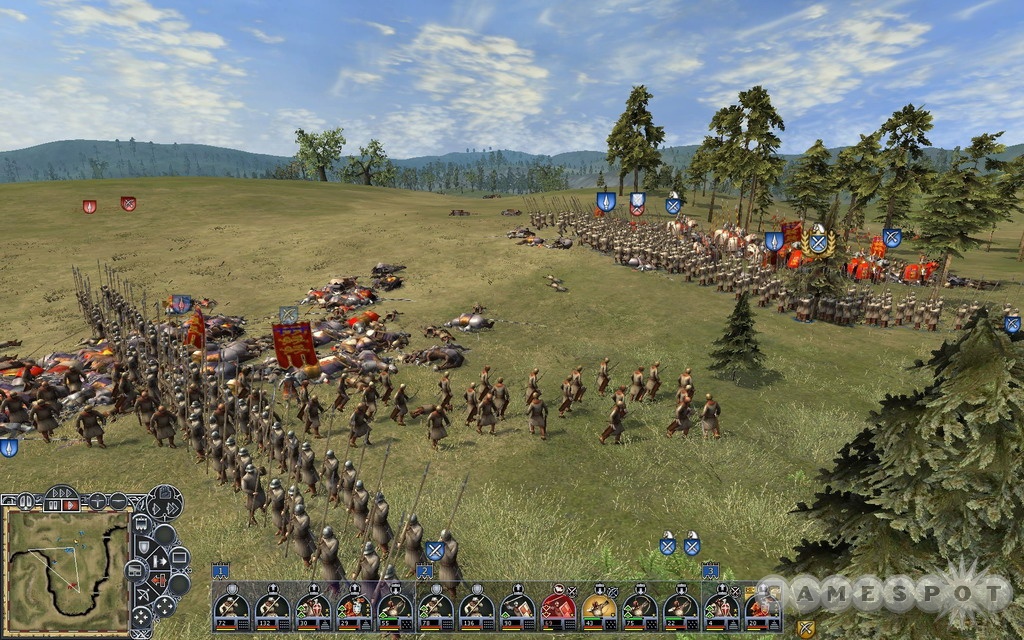Calling XIII Century: Death or Glory a poor man's take on the Total War series may seem like a condemnation of this tactical RTS with mere faint praise. But even though this compendium of great medieval battles might not be as all-encompassing as its big brothers from Creative Assembly, first-time developer Unicorn Games Studios has put together a challenging historical warfare simulation with outstanding depth. It feels a little stripped down when it comes to frills and extra gameplay options, although the game has it where it counts if all you're interested in is pitting your mettle and might against enemy generals on the battlefield.

There actually isn't much here aside from you going all medieval on the computer's posterior. XIII Century swaps the stereotypical grand campaign where you rule an empire for "campaign light" mission packs where you fight alongside the medieval armies of England, France, Germany, Russia, and the Mongolian hordes of Genghis Khan. Each of these collections features five separate historical battles that you unlock one by one. So the English start with Evesham then move on to Falkirk, Conwy, Lincoln, and Lewes. The Russians fight at Yaroslav, Torchev, Lake Peipus, Rakovor, and Lipitsa. The French take to the bloody fields of Taillebourg, Muret, Tagliarozzo, Benevento, and Bouvines. And so on. You get a pretty comprehensive tour of all the 13th-century hot spots by the time you work your way through all five nations and a set of bonus battles that open up as your rank grows through winning battles.
All this might seem a bit on the skimpy side to anyone coming off of an overwhelming epic like Medieval II: Total War. But since the battles here are so thoroughly depicted, it's hard to quibble with the warfare-centric focus. For starters, XIII Century is tough. Battles are founded on a rigorous rock-paper-scissors formula, so you can't just lumber about and rush foes with no consideration as to their relative strengths and weaknesses. This isn't a simple formula, either. Although many basics are in play here (keep cavalry away from pikemen, keep archers on high ground, that sort of thing), unit statistics are heavily detailed. This gives you a lot to keep track of during battles, which tend to fly by even at regular speed, but at least the interface provides ready access to everything you need to know. Moving the mouse cursor over unit formations provides banks of numbers detailing morale, number of wounded, whether or not the flanks and rear are covered, and so forth. So you can get instant snapshots of how your troops are faring when things are going hot and heavy, which lets you keep pace and give the right commands at the right times.
Stats aren't much help when it comes to dealing with battlefields, though. Maps here are so intricately detailed that you have to use the terrain to your advantage in order to have a chance at victory, even if the odds are heavily in your favor. Each is packed with hills that provide great positions for archers, paths that allow cavalry units to pull off sneaky flanking maneuvers, rivers that let you set up almost impregnable defenses, and so forth. Having to take the lay of the land into account before giving even the most basic order really enhances the realism of medieval warfare, and underlines how battles can turn on presumably minor issues such as how well a general uses a hill. Beautiful, detailed graphics really bring these backgrounds to life, too. Panning around during battles reveals postcardlike vistas of hills, mountains, and rivers, along with the rather incongruous (if majestic) sight of soldiers in full armor.
Cunning artificial intelligence makes the challenge presented here even stiffer. Enemy forces know the rock-paper-scissors formula well and use it to pull off some truly stunning attacks. Expect any and all openings to be exploited, so be sure not to leave any archers uncovered by heavy ground troops or enemy cavalry will decimate them in moments. One mistake can easily cost you a battle, even if it looks like you're presiding over a triumphant rout. Defenses are also adroitly handled by the AI. Even if you execute a brilliant plan that catches the enemy off-guard, computer-controlled forces tend to launch counters that can turn things around in the blink of an eye. Battles can't be won on one or even two astute maneuvers, so you have to string together a full series of smart moves to emerge victorious. It's astonishing how well computer armies rally from serious setbacks, regularly bouncing off the canvas from even crushing blows like having archers slaughtered by a sly flanking cavalry charge.

As good as XIII Century is on the battlefield, it doesn't offer all that much off of it. Only the Custom Battle mode is a worthwhile addition to the campaigns, as it lets you set up battles with more than a dozen nations and family factions and buy armies with set starting amounts of cash. Multiplayer is something of a lost cause at present, as it supports only direct IP connections (although a patch providing access to a matchmaking server is apparently in the works). And the visuals and sound are a bit on the wonky side, with occasional frame-rate hitches and sharp pops whenever you get into heavy battles with hundreds of units onscreen at once. The game can become nearly unplayable very fast when this happens, which can sabotage your ability to control battles.
Still, XIII Century: Death or Glory provides a deep, challenging taste of medieval warfare even with its singular focus on the field of battle. That might not be enough for some strategy gamers, although anyone with a mind for military tactics should appreciate this exacting look at one of history's bloodiest centuries.